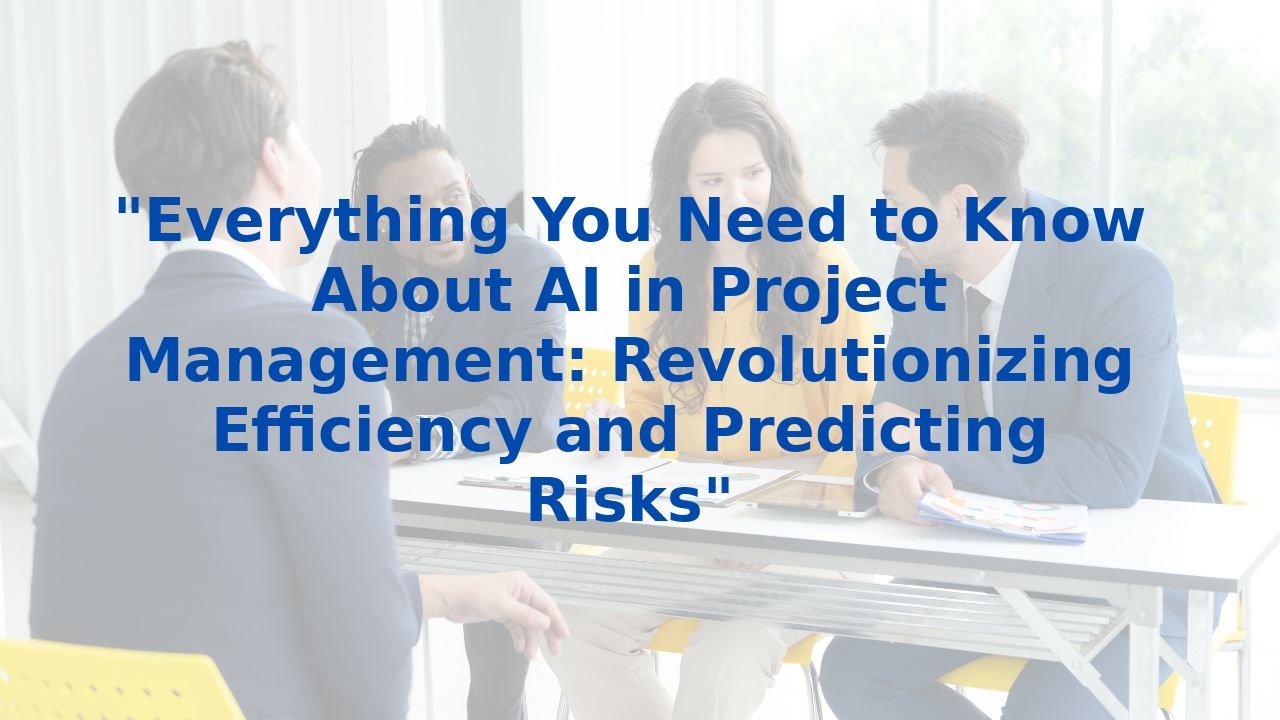Unlocking Efficiency: A Guide to AI-Driven Business Process Management
Unlocking Efficiency: A Guide to AI-Driven Business Process Management
Understanding the Landscape of Business Processes
In an era dominated by rapid technological advancements, businesses are now pressured to optimize their operational methodologies. With growing competition, organizations seek effective strategies to not just survive, but thrive. Business Process Management (BPM) plays a pivotal role in this dynamic, as it allows companies to identify, analyze, and improve their business processes. The integration of Artificial Intelligence (AI) into BPM is not just a trend; it’s a revolution that fundamentally alters the trajectory of how organizations operate.
Elevating Efficiency Through AI
AI enhances BPM by infusing intelligent automation, data analysis, and continuous improvement into the very fabric of business operations.
1. Transformative Data Analysis
Imagine a tool that scans troves of information at lightning speed, providing actionable insights almost instantaneously. AI reshapes data analysis by rapidly processing and analyzing vast datasets. This capability not only saves countless hours but also empowers teams to focus their energies on strategic planning rather than tedious number crunching. Insight-driven decision-making becomes visible, revealing trends and potential outcomes that may have gone unnoticed.
2. Streamlined Process Building
Creating process maps often demands time and meticulous effort. AI steps in to expedite this process by constructing optimal workflows based on historical data and predefined parameters. Consequently, this automation liberates teams, allowing them to engage with higher-level strategic tasks instead of getting bogged down in the minutiae of process construction.
3. Intelligent Process Automation
Repetitive tasks such as data entry or answering customer inquiries no longer need to weigh down human employees. AI-driven automation removes the burden of mundane activities, increasing efficiency while simultaneously providing a constant and reliable output. These systems work tirelessly, enhancing productivity and accuracy, while allowing your talent to focus on activities that add genuine value.
4. Ongoing Process Improvement
AI facilitates a cycle of continuous improvement by offering invaluable, data-backed feedback. Operations don’t just run—they evolve. Organizations can streamline its BPM strategies through constant adaptation based on actionable insights, ensuring alignment with business objectives and industry dynamics.
The Multifaceted Benefits of AI in BPM
Integrating AI into business processes yields a plethora of benefits that remarkably enhance organizational performance.
1. Accelerated Decision-Making
The ability to synthesize structured and unstructured data allows organizations to make informed decisions swiftly. By highlighting important patterns and potential risks, AI equips leaders to take decisive action that maximizes opportunities and mitigates challenges.
2. Real-Time Monitoring
With AI monitoring processes continuously, businesses gain real-time insights into their operational status. This constant vigilance empowers organizations to respond adeptly to emerging issues and capitalize on real-time opportunities.
3. Predictive Analytics for Proactive Adjustments
AI serves as a trusty fortune teller, predicting disruptions and inefficiencies based on historical data. This foresight empowers organizations to preemptively adjust their operations, ensuring agility in the face of changing market conditions.
4. Enhanced Risk Management
In an uncertain business landscape, risk management plays a critical role. AI identifies anomalies and deviations, allowing organizations to address concerns proactively, thereby reducing costly mistakes before they manifest.
Empowering Employees for AI Integration
As transformative as AI is, its true potential can only be harnessed when employees are prepared to embrace it. Training is crucial for successfully navigating this digital transformation.
1. Grasping AI Capabilities
Employees must understand the breadth of AI functionalities, grasping the potential and limitations inherent in varying contexts. Equipping them with this knowledge enables them to collaborate effectively with AI solutions.
2. Cultivating Data Literacy
To thrive in an AI-enhanced environment, employees need data literacy—the ability to interpret and analyze data. By instilling these skills, organizations prepare their workforce to extract meaningful insights from AI-generated information.
3. Fostering Adaptability
The fast-paced technological landscape requires an adaptable workforce ready to learn continually. Embracing new technologies and workflows is vital for maximizing the benefits AI offers.
4. Collaborative Synergy with AI
Employees should learn to harmonize their human intelligence with AI insights. This collaboration balances the analytical strength of AI with the nuanced understanding that humans bring to decision-making.
Conclusion
The fusion of AI into Business Process Management is more than a mere enhancement; it’s a catalyst for transformation. By reimagining data analysis, building processes intelligently, automating tiresome tasks, and striving for continuous improvement, organizations unlock unparalleled efficiency. However, success hinges not just on technology, but also on empowering employees through comprehensive training. When equipped with the knowledge and skills to leverage AI effectively, businesses can position themselves for sustained success in an increasingly competitive landscape.



